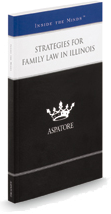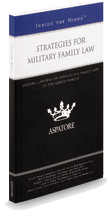Child custody is much more nuanced than many people think it is. There are lots of different ways that custody can be arranged, depending on the unique needs of a particular family dynamic or scenario. If you are navigating a divorce, it is important to know that there are many different iterations of custody that you will encounter. The court will help to determine which is best for your child or children, so that the divorce has minimal impact on their well-being.
When many people consider child custody, they think of full custody, partial custody, and visitation situations. While these are still important, the system is further split into two categories: legal and physical custody. The two are distinct in the eyes of the law, and can have drastic impacts on parental rights. For those seeking child custody, the difference between physical and legal custody is essential information.
Physical Custody
When many people think of child custody, they think of physical custody. This area encompasses the children’s physical location at any given time or on any given day. Having physical custody over a child means that you are obligated to care for them at certain times, and make sure that they stay away from physical harm. You must do things such as feed, clothe, house, and bathe them, as well.
Common types of physical custody include:
- Shared physical custody. This arrangement means that the child or children live with both parents equally. In some scenarios, this means that the week is split in half, while other scenarios include alternating weeks or even months. Each parent is physically in charge of the children for an equal amount of time.
- Primary physical custody or visitation. This means that the child or children live with one parent primarily, but may spend an alternating weekend or occasional visit with the other parent.
- Sole physical custody. In these scenarios, one parent raises the child or children and they do not see the other parent except under the discretion of the custodial parent. The non-custodial parent technically does not have physical custody at all.
Physical custody focuses on keeping the children safe, and helping to raise and nurture them as they grow. This is a significant part of parenthood whether you are divorced from your child’s other parent or not.
Legal Custody
The other main type of custody is legal custody. This type of custody is more abstract, but has the capacity to have a significant impact on the child. Legal custody encompasses all decisions regarding the child’s life such as how they should be raised, what kind of healthcare they should have, etc. If a child needs a surgery, for example, those who have legal custody over the child will make the decision whether the child will get the surgery, where they will get the surgery, follow-up care, etc. Legal custody lasts until the child is of age to make their own decisions, usually at the age of 18 or the age of autonomy.
There are different ways to structure legal custody as well. In some cases, only one parent has legal custody, and makes all decisions regarding the child. In other cases, parents share legal custody after they divorce. This means that they agree to work together to make big decisions about the child’s life.
Legal and Physical Custody Together
Legal and physical custody do not necessarily act independently of one another. A parent may have both legal and physical custody, or may have neither physical nor legal custody. However, there are scenarios in which a parent has one type of custody but not the other.
For example, a parent may have shared physical custody but have no legal custody, meaning that they cannot make big decisions regarding the children but they do have guardianship time.
In other scenarios, a parent does not have physical custody but does have legal custody. This means that they work with the child’s other parent to make big legal decisions, but they do not have guardianship over the child or children in St. Charles. This often occurs when one parent lives or moves far away, but still wants to participate in the child’s life.
Gaining Custody
The custody system is fairly straightforward. The courts will only consider the best interests of the child when determining who should have custody. They assess the parent’s mental, physical, and emotional capacity to care for the children and grant custody accordingly.
If, for example, a parent is of sound mind, has a good record, and is kind and generous to the children but has an especially hectic work schedule, the court may grant the parent legal custody and visitation. This allows the children access to their parents while ensuring that they are properly looked after by someone who has the time and energy to do so.
Do I Need A St. Charles Custody Lawyer?
When you navigate a divorce and child custody, it is important to make sure that you have proper legal representation. Though the judge ultimately wants what is best for the children, your attorney helps to show the court what is best for the kids. Without this representation, many parents lose access to their children, or end up in a custody agreement that is not ideal. Having proper legal representation during the custody process ensures that you are properly presented to the courts, and that the judge has all the information before making a decision.
Contact Stange Law
If you need a St. Charles child custody lawyer, our team at Stange Law is here to help. For many years, our firm has been helping families through the difficult landscape of divorce and child custody. We know how hard the process can be, and we do everything in our power to make it easy on you. We help you to fight for the physical and legal custody arrangement that you desire so that you can continue to participate in your children’s lives for years to come.
Contact us today for a consultation.



